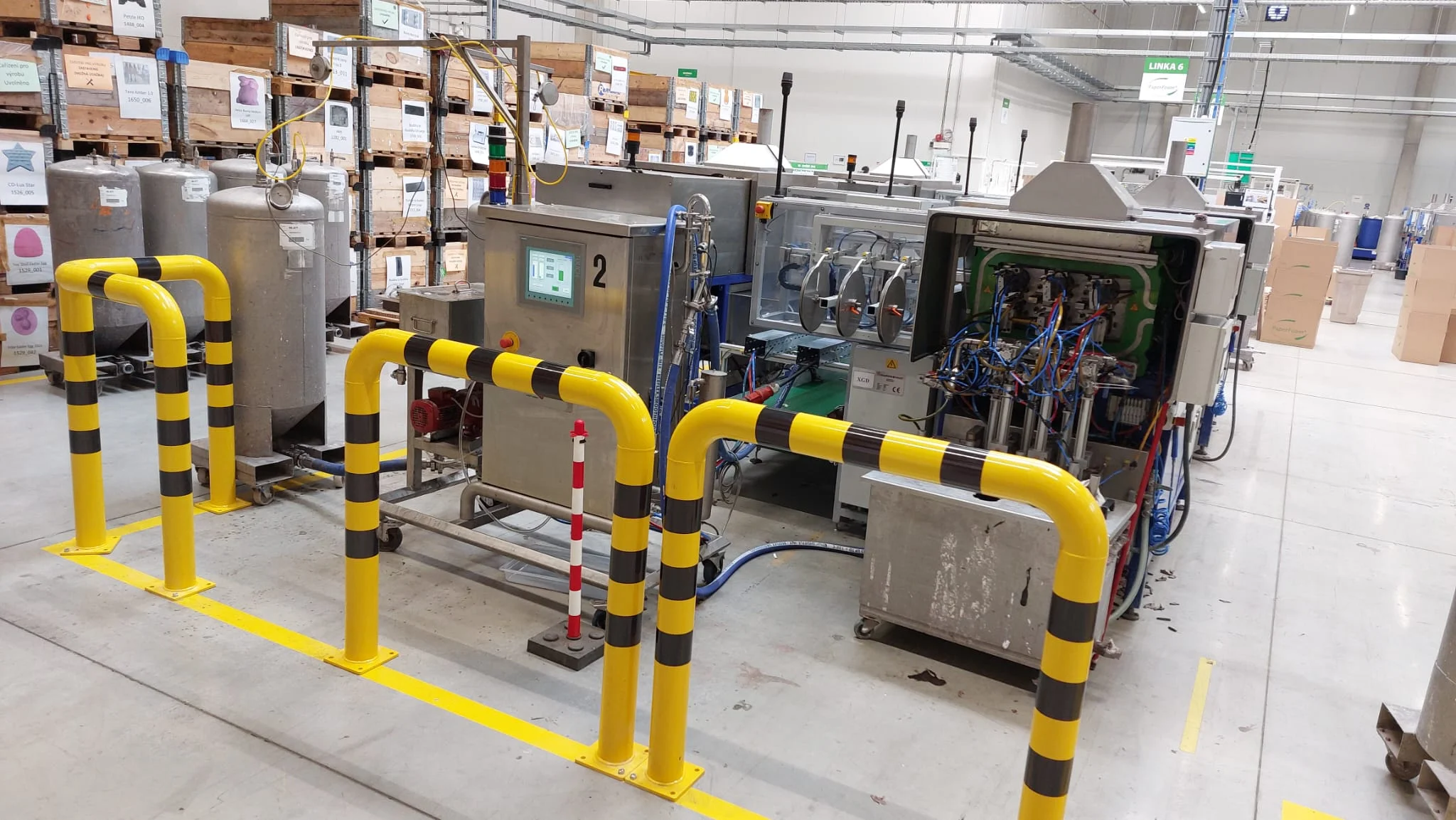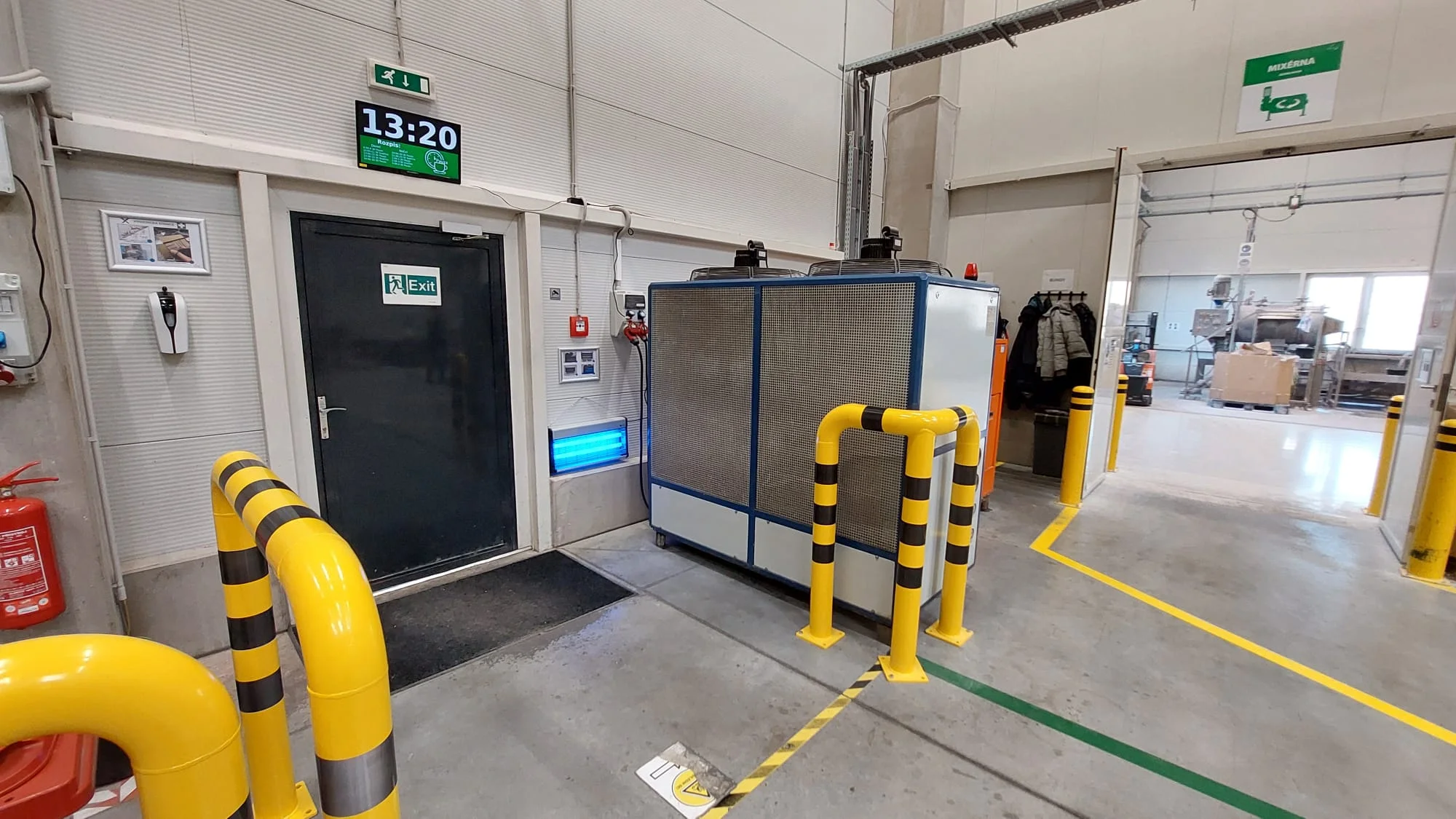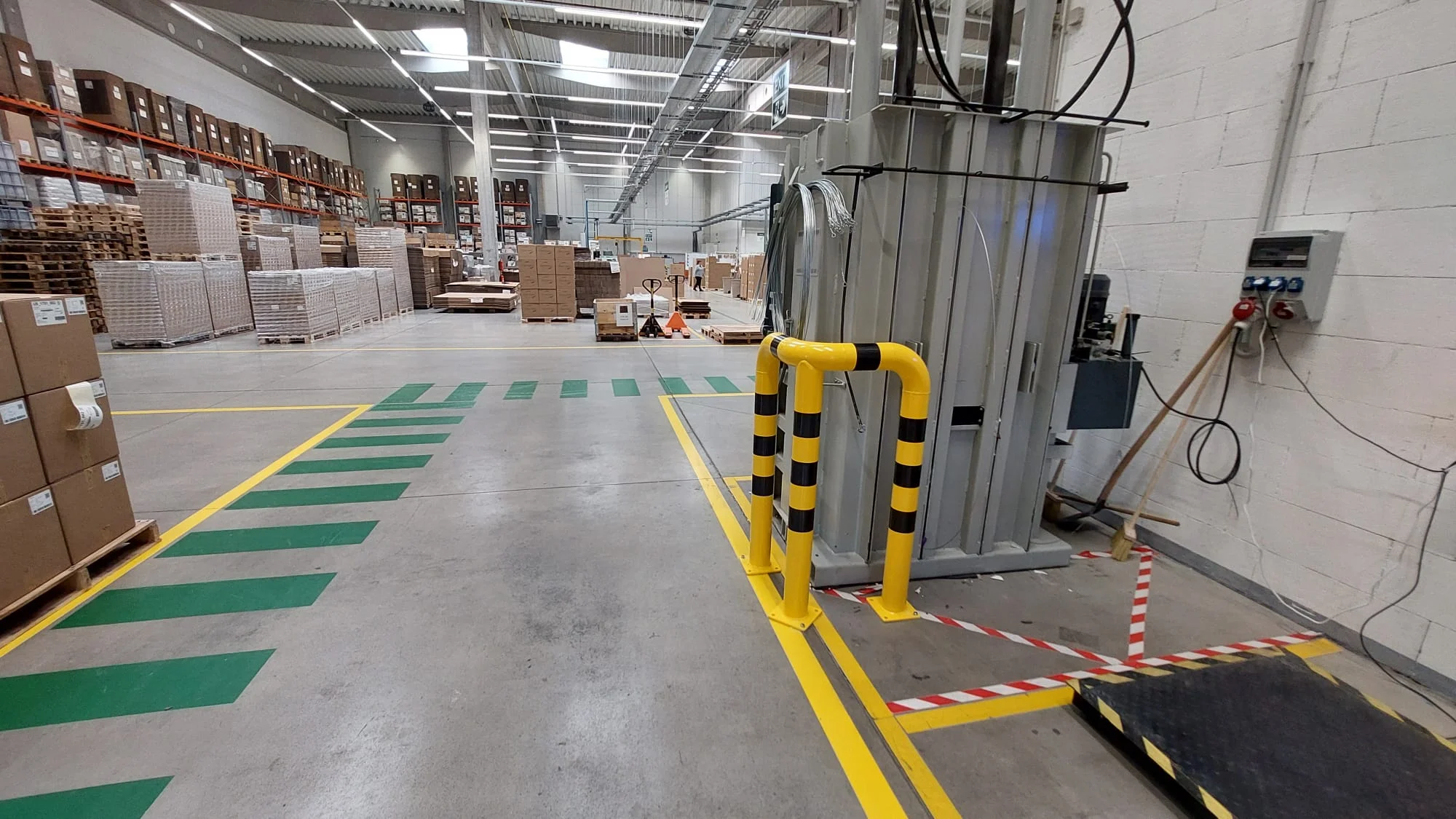What did we do with this investment:
- sale and installation of safety barriers.
What are safety barriers used for in production plants?
Safety barriers are one of the unnoticeable but important elements of the functioning of most production plants.
Despite their simplicity, they perform important protective functions, ensuring the safety of personnel and equipment. Safety barriers, also known as bumpers, are simple devices mounted on walls, floors or industrial equipment. Their main task is to protect against damage caused by moving machines, forklifts or other transport devices used at the plant.
The primary purpose of using safety barriers is to protect the structure of buildings and production equipment. Forklifts used to transport goods in a warehouse can easily damage walls, warehouse shelves and expensive machinery. Installing safety barriers in strategic places allows for effective protection of infrastructure and equipment.
Depending on the specific solution and materials used for production, safety barriers can also minimize the impact force and, consequently, the risk of potential injury to employees. Some models are equipped with special layers that absorb impact energy, providing even better protection.
Safety barriers also provide protection for moving machines. In the manufacturing industry, where equipment is often expensive and necessary to maintain production continuity, this is extremely important. These types of devices block the path of machines, preventing collisions that could damage them.
Safety barriers are usually made of durable materials such as rubber, plastic or steel. Such materials can withstand high impact forces, regardless of weight or speed. Due to the fact that they are constantly exposed to impacts and friction, they must be very resistant to damage.
The use of safety barriers in production plants is extremely wide and depends largely on the specificity of production. They are found both in warehouses, where they protect shelves and goods, and in the production hall, where they protect machines and devices.
To sum up, industrial fenders play a key role in protecting infrastructure, equipment and employees from damage. Thanks to them, it is possible to maintain safety and continuity of work in production plants. Many companies appreciate their usefulness and treat them as essential pieces of equipment. Investing in safety barriers is therefore a decision that will bring both short and long-term benefits.

Are there regulations regarding safety barriers in Europe?
Safety Barriers are an integral element of most production and warehouse plants, providing necessary protection for staff, buildings and equipment.
Given the key role of safety barriers, it is natural that regulations at both national and international levels specify requirements for their production, installation on floors industrial concrete and maintenance.
There are many regulations in Europe regarding the safety and health of workers, which indirectly influence the use of safety barriers. For example, the Machinery Directive 2006/42/EC applies to load handling equipment such as forklifts. This directive requires employers to protect employees against possible risks associated with the movement of machinery and equipment.
Although there is no specific legislative document that focuses exclusively on industrial bumpers, many standards and regulations indicate the need to use them to minimize the risk of accidents at workplaces. For example, EN 15512:2020 is a European standard for warehouse systems that highlights the need to use protective measures, such as safety barriers, to ensure safety.

Additionally, the ISO 14122-3:2016 standard defines the requirements for fixed access systems for industrial machinery and emphasizes the importance of minimizing the risk of collisions using appropriate safeguards, such as safety barriers.
In addition to the above, there are many other industry standards and regulations that require the use of safety barriers in specific situations, for example on forklift routes or in goods storage areas.
The proper use of safety barriers is also part of the recommended risk management strategy in production plants and warehouses. The safety management system according to ISO 45001:2018 requires the organization to identify threats and risks and apply effective risk control measures.
In summary, while there is no single, specific European regulation for safety barriers, their necessity is driven by many other regulations, standards and norms that promote safe work practices. Industrial bumpers are therefore extremely important for maintaining the safety and health standards of workers in workplaces throughout Europe.

Work results:
- sales and installation Arched corner barrier OPL03 - 17 pcs;
- sales and installation Straight arched barrier OPP14 - 120 pcs.





